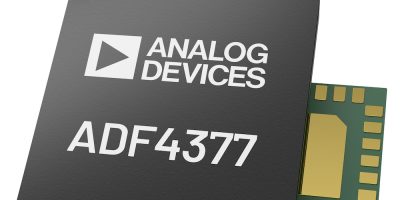At this week’s Sensors Converge Conference in San Jose, California, USA, Allegro MicroSystems has launched the A33110 and A33115 magnetic position sensors.
Designed for advanced driver assistance systems (ADAS) applications that require high levels of accuracy and heterogeneous signal redundancy, the sensors combine the company’s vertical Hall technology (VHT) with tunnelling magnetoresistance (TMR) technology in a single sensor package. The angle sensors are claimed to be the first of their kind to feature this technology combination in a single package. VHT and TMR is a heterogeneous redundant sensor for automation in vehicles.
The A33110 and A33115 sensors provide magnetic angle sensing via both the primary (TMR) and secondary (vertical Hall) transducers, each of which are processed by two independent channels, each with independent regulators and temperature sensors. This configuration enables the high levels of safety and diagnostic coverage needed for automated driving, including on-chip channel-to-channel angle comparison and independent processing in digital signal paths, with no shared digital resources. Advanced algorithms in both sensors deliver the fast response time, independent gain/offset correction, angle calculation, and linearisation capabilities demanded by safety-critical ADAS applications.
The A33115 also includes a turns counter that tracks motion in 90 degree increments and a low power mode with a user-programmable duty cycle that reduces power consumption when the IC is in a key-off position.
Future automated and autonomous vehicles require advanced electric power steering (EPS) systems with precise motor control capabilities, as well as brake-by-wire or electromechanical braking systems with fast response time. Present day systems commonly use giant magnetoresistance (GMR) or Hall-effect sensors. Compared to the GMR equivalents, Allegro’s TMR on silicon technology offers improved resolution and accuracy, said the company, providing up to eight times greater sensitivity. Measured against traditional Hall-effect sensors, the improvement in resolution is even more pronounced, added the company.
The safe operation of a vehicle requires the highest level of diagnostic coverage in safety-critical systems. Allegro’s VHT enables accurate safety checks, including low-field and missing-magnet detection. The high-resolution sensors are ASIL D-compliant, with heterogeneous redundancy reducing the likelihood of dependent failures, claimed Allegro.
Car manufacturers and Tier 1 suppliers are looking for position sensors that provide the greatest accuracy and safety while reducing system footprint and cost, said Scott Milne, business line director for position sensors at Allegro. Integrating both vertical Hall and TMR elements in a single package, enables the customers to meet those needs with a sensor that provides high resolution and heterogeneous redundancy along with integrated diagnostics, he added.







